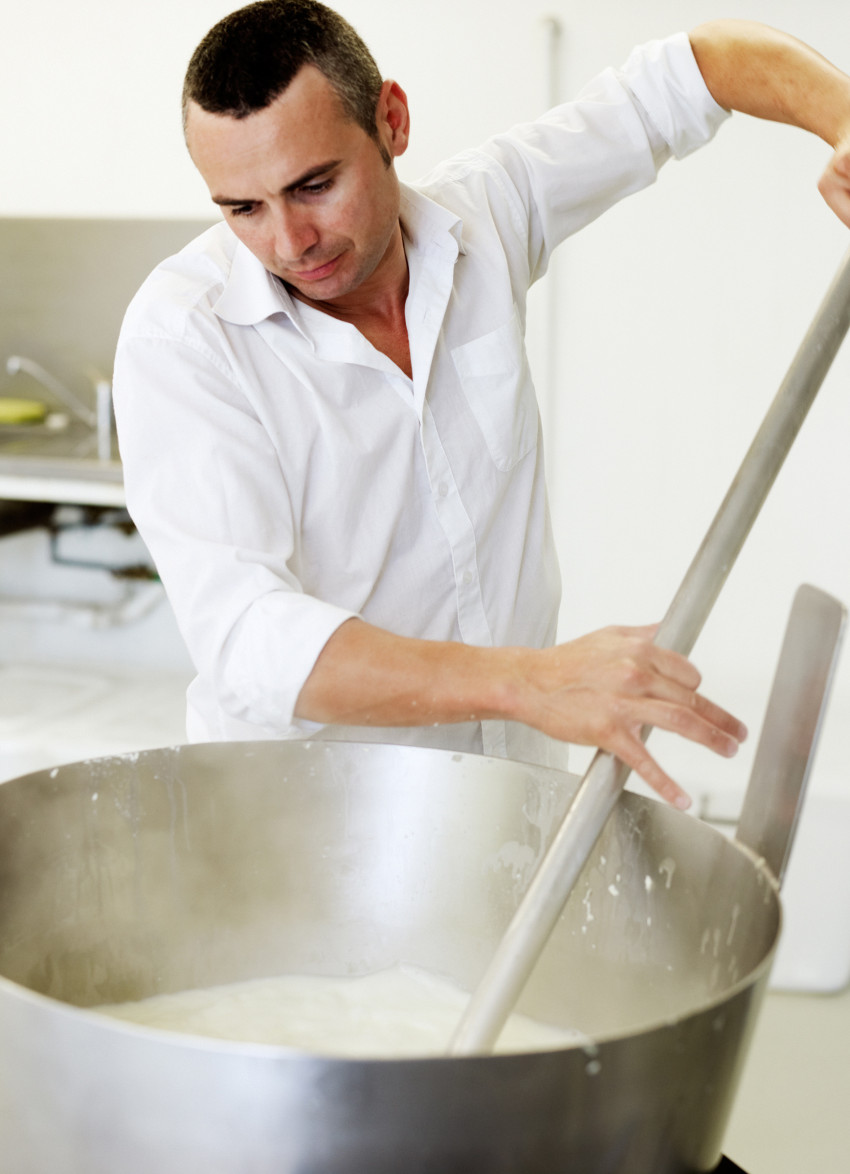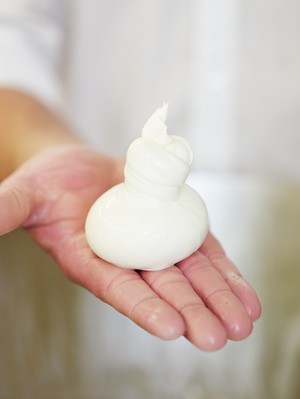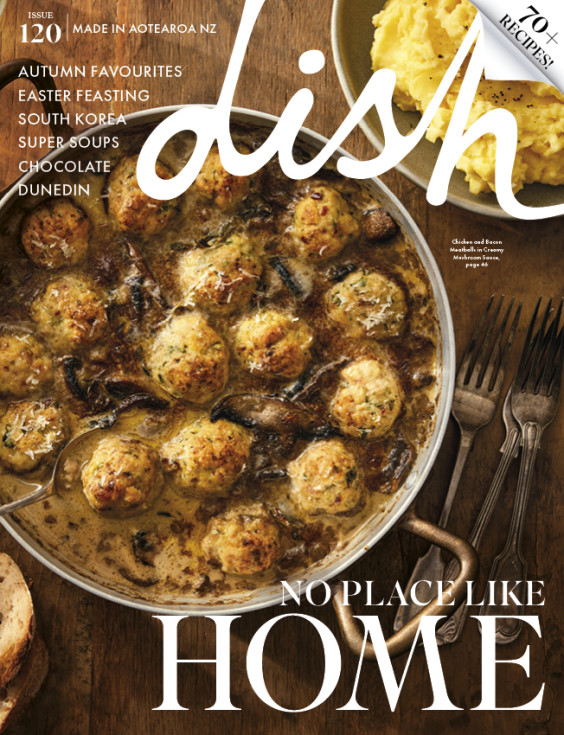Of Milk and Whey

Massimiliano De Caro came to New Zealand to teach traditional Italian cheese making and fell in love with the country – and the milk, as Nicole Curin Birch discovers.
When meeting Massimiliano De Caro it would be easy to think he is obsessed with cheese making and Massimiliano would be the first to agree.
“Cheese is my passion. It’s my life. I can’t imagine not doing this every day.”
One half of the duo behind Il Casaro, a bespoke Italian cheese making business operating out of a small factory in Glenfield, Auckland, Massimiliano is possibly the most enthusiastic cheese maker I have ever met.
In fact, he has no problem telling me, albeit with a very shy smile, that he believes his cheeses speak to him.
“It’s like they whisper to me ‘today I need to be turned this much or the temperature in the cave needs to be up or down one or two degrees or I’m not ready yet’. They let me know how they are doing,” he says.
He knows he sounds more than a little out there, but for someone who has been crafting cheese for almost every day of his life for the past 25 years he certainly understands the slightest nuance of every one he makes.
Currently burrata, a small purse of stretched mozzarella filled with fresh cream and stringy curd that bursts like a decadent little bomb once cut or bitten, is the cheese Massimiliano is most preoccupied with.
A speciality of Puglia, the ‘heel of the boot’ and the region from which Massimiliano hails, burrata is known locally as ‘the queen of cheeses’ because it’s both rich and delicate.
Like many of the most delicious foods, burrata was invented as a way of making the most of leftover scraps of mozzarella that were left in the cheese making vat.
Without giving away any of his trade secrets, which Massimiliano keeps very firmly to himself, he explains that burrata is one of the trickiest and most technical cheeses to make.


Working very quickly, Massimiliano stretches out small pieces of hot mozzarella (at least 85ºC) into the paper-thin pouches used to encase the mozzarella scraps that are then topped off with fresh cream or ‘panna’.
Traditionally burrata are eaten the day they are made and sold wrapped inside a green asphodel leaf. The leaves are an indicator of the age of the cheese. A dry and lacklustre leaf will mean the burrata is past its best by date.
Massimiliano’s burrata has something of a cult following among Auckland foodies. He sends daily orders through to some of the city’s most popular restaurants including The Engine Room, The Grill and Non Solo Pizza. He also sells at farmers markets around the city every week. Both chefs and market customers use the burrata in salads, atop of pasta and pizza or, Massimiliano’s personal favourite, spread across bruschetta and topped with just plucked ripe tomatoes.
As is traditional in Puglia, all of the Il Casaro cheeses are made from cows’ milk.
“I was born in Gioia del Colle, which is the capital of cows’ milk mozzarella in Italy. We don’t do it any other way where we come from and we don’t ever use buffalo milk. That is something they do in other places in Italy but not in my town.”
Apprenticed at the age of 14 to a master cheese maker (a Casaro) Massimiliano spent years and years perfecting different techniques for making mozzarella and burrata. Some might find this tedious work but for Massimiliano every day was a thrill.
“I got to watch and learn from the best and was able to discover some of their secrets while developing my own. Every good Italian cheese maker has their own way of doing things and these are usually passed down through the family. We never ever tell.”
Having said that, Massimiliano did arrive in New Zealand two and a half years ago charged with the specific task of teaching a fellow countryman how to make cheese the traditional way. That business is now flourishing and having fallen in love with the country, and our cows’ milk it has to be said, he decided to stay on and start a cheese making company of his own.
Enter his Il Casaro partner Fabio Galli. Not involved with the actual making of the cheese – which is strictly Massimiliano’s domain – Fabio works on the sales, marketing and day-to-day running of the business.
“I moved to New Zealand in 2006 for the windsurfing really,” laughs Fabio,” but I did miss a lot of our food culture, especially mozzarella. I remember calling an importer to secure some for an Italian cook-off party and I also tried to make it by myself with modest results. When I met Massimiliano, I could not believe it: finally some fresh mozzarella in New Zealand. Locally made, by a super-competent Italian dude from Gioa del Colle.”
Together they launched Il Casaro at the beginning of 2012 starting with fresh mozzarella and ricotta and expanding out to produce nine different traditional Italian cheeses, including, of course, burrata.
Their range spans from the super soft and spreadable stracchino cheese to more seasoned examples like provolone, a springy savoury cheese often used in cooking. One of the more unusual is cacioricotta. Originating from Puglia, cacioricotta looks very similar to a dried ricotta but has a much more creamy centre and has a slight savoury, yeasty flavour. Massimiliano keeps dozens of them in his ‘cave’ – a cool store fridge – and lovingly tends to each daily, turning them a few degrees this way or that and lowering or increasing the temperature as needed.
Il Casaro’s treccia mozzarella won a gold medal at the New Zealand Champions of Cheese awards last year, beating some very stiff competition. Massimiliano attributes the win to his method of stretching, pulling and manipulating the cheese into a plait, the quality of the milk he uses and, of course, the years he has spent perfecting his craft.
Il Casaro’s milk is sourced from Green Valley Dairy and Massimiliano says it’s some of the best he has worked with.
“The milk really decides how you make the cheese. If the cow has been eating lots of grass or if it has been really hot or raining a lot, this really makes a difference. Everything has to be done in response to how the milk tastes and how the cow has been living before it is milked. The milk here in New Zealand is really good.”
They both agree that teaching people about their cheese is one of the best parts of the business.
“I love very much to see the looks on peoples faces when they try my cheese,” says Massimiliano. “Many of them have never had anything like it before and they usually buy. We are inexpensive and they are surprised by that.”
“Fresh mozzarella and burrata are very new here,” says Fabio. “People are used to imported cheese or cheese that has preservatives and is very rubbery, so teaching them about how it should be is a lot of fun.”
The response has been really positive which means Il Casaro is increasingly busy. Alongside the restaurants, select specialty stores and farmers’ markets (Parnell, Oratia, Hobsonville Point, and Coatesville and the Takapuna Night Market) they have many private customers and have been approached by delicatessens and boutique supermarkets. They also plan to expand their online business.
“It’s all really good,” says Fabio. “Hopefully we will be able to expand around the rest of the country too.”
latest issue:
Issue #120
As the days become shorter, and the nights cooler, the latest issue is perfectly timed to deliver delicious autumn dishes. From recipes using fresh seasonal produce such as feijoas and apples, to spectacular soothing soups and super-quick after-work meals in our Food Fast section, we’ve got you covered. With Easter on the horizon, we feature recipes that will see you through breakfast, lunch and dinner over a leisurely weekend holiday, and whip up chocolatey baking treats sure to please. We round up delicious dinners for two and showcase a hot new Korean cookbook before heading south to Dunedin to check out all that’s new in food and dining.The latest issue of dish is on sale NOW at all good bookstores and supermarkets – don’t miss it!

